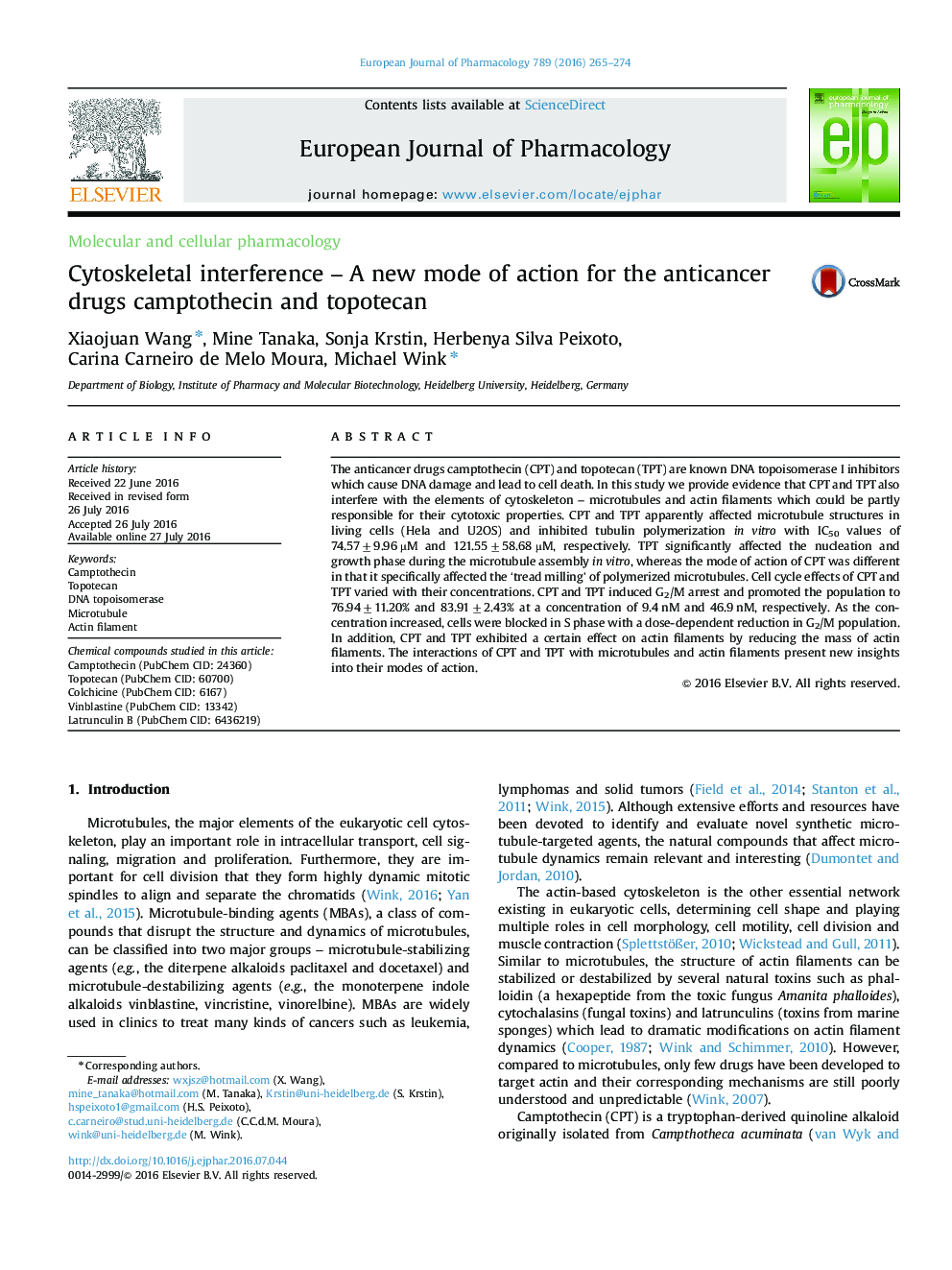| Article ID | Journal | Published Year | Pages | File Type |
|---|---|---|---|---|
| 2530816 | European Journal of Pharmacology | 2016 | 10 Pages |
The anticancer drugs camptothecin (CPT) and topotecan (TPT) are known DNA topoisomerase I inhibitors which cause DNA damage and lead to cell death. In this study we provide evidence that CPT and TPT also interfere with the elements of cytoskeleton ― microtubules and actin filaments which could be partly responsible for their cytotoxic properties. CPT and TPT apparently affected microtubule structures in living cells (Hela and U2OS) and inhibited tubulin polymerization in vitro with IC50 values of 74.57±9.96 µM and 121.55±58.68 µM, respectively. TPT significantly affected the nucleation and growth phase during the microtubule assembly in vitro, whereas the mode of action of CPT was different in that it specifically affected the ‘tread milling’ of polymerized microtubules. Cell cycle effects of CPT and TPT varied with their concentrations. CPT and TPT induced G2/M arrest and promoted the population to 76.94±11.20% and 83.91±2.43% at a concentration of 9.4 nM and 46.9 nM, respectively. As the concentration increased, cells were blocked in S phase with a dose-dependent reduction in G2/M population. In addition, CPT and TPT exhibited a certain effect on actin filaments by reducing the mass of actin filaments. The interactions of CPT and TPT with microtubules and actin filaments present new insights into their modes of action.
Graphical abstractFigure optionsDownload full-size imageDownload high-quality image (240 K)Download as PowerPoint slide
